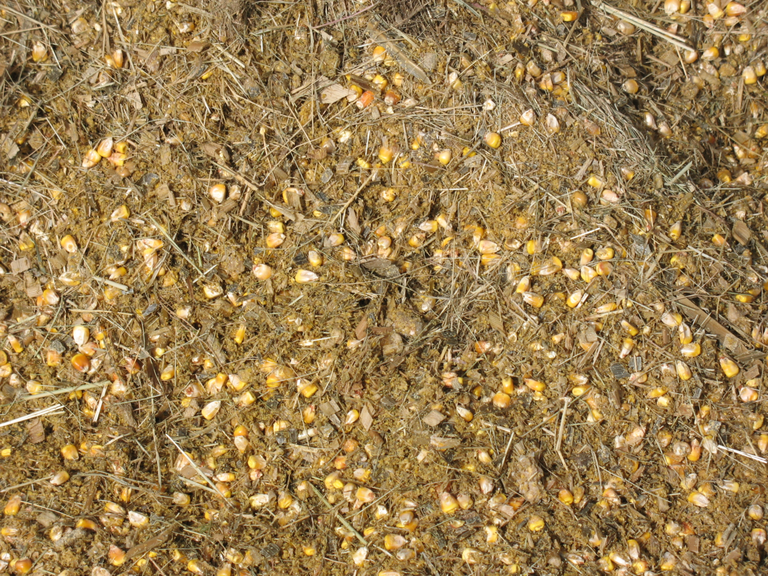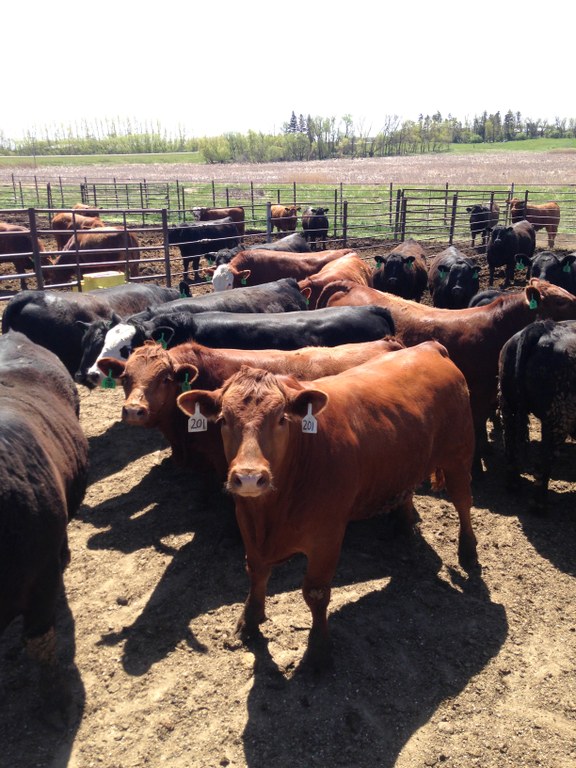To Roll or Not to Roll?
Typically when corn is included in cattle rations, particularly in backgrounding and finishing diets, it is processed by dry rolling, grinding, or steam flaking. In North Dakota, the processing method is typically dry rolling or grinding. However, not everyone has the ability to process corn on the farm and it is an added cost. Every year producers ask, “do I need to roll my corn or can I feed it whole?”. Unfortunately it is not a simple answer. As we glean through the huge body of research that has evaluated corn processing method and levels of processing, the results are mixed. In many cases, there is no difference between animal performance or feed efficiency when corn is rolled or fed whole. In other instances animal performance may be similar but dry matter intake is increased when whole corn is fed, and thus feed efficiency is improved with processing over whole corn. Additionally, age of animal may also be a factor.

Whole Corn Diet
Over the past few years, research trials at the North Dakota State University Carrington Research Extension Center (CREC) has focused on trying to sort through this mystery and clarify if rolling is beneficial or when feeding corn whole is comparable to rolled corn diets. The research trials at the CREC have included: two yearling steer feedlot finishing trials with higher than typical forage levels and one trial using weaned calves to evaluate processing level in backgrounding and finishing rations have been conducted.

Rolled Corn Diet
The data for the first two yearling feedlot trials have been published in the 2014 and 2015 North Dakota Beef report and can be accessed here: https://www.ag.ndsu.edu/pubs/ansci/beef/AS1736-07.pdf and https://www.ag.ndsu.edu/pubs/ansci/beef/as1775-05.pdf.

Cattle on Feed
The most recent trial was a 61 day growing and 140 day finishing study with whole or rolled corn, using 189 weaned cross bred steer calves. The forage level in the growing diet was 31% and 14% in the finishing diet, from corn silage and straw. Corn levels in the diets were similar between whole and rolled corn. The average starting weight was 665 lbs. The cattle weighed 863 lbs at the end of the growing period and finished at 1399 lbs. In the growing period, the cattle gained 3.22 lbs/head/day on both the rolled and whole corn diets. Dry matter intake was also similar for whole and rolled corn diets at 18.9 lbs/head/day. In the finishing period, gains were similar for whole and rolled corn diets at 3.9 lbs/head/day. Dry matter intakes were also similar at 24.0 lbs/head/day. Thus, for both the growing and finishing periods the feed to gain ratio was similar for whole and rolled corn fed cattle.
- In these trials, consistently across all, the animal performance was similar if whole or rolled corn was fed.
- In one yearling trial, dry matter intake was increased with whole corn but similar dry matter intakes were measure for whole or rolled corn in the other two.
- In the yearling trials, the gain to feed ratio tended to be higher for rolled corn.
- In the weaned calf growing and finishing trial, the gain to feed ratio was similar with whole or rolled corn.
For more information call 701-652-2951 or email Chanda.Engel@ndsu.edu.
Chanda Engel
Livestock Research Specialist


